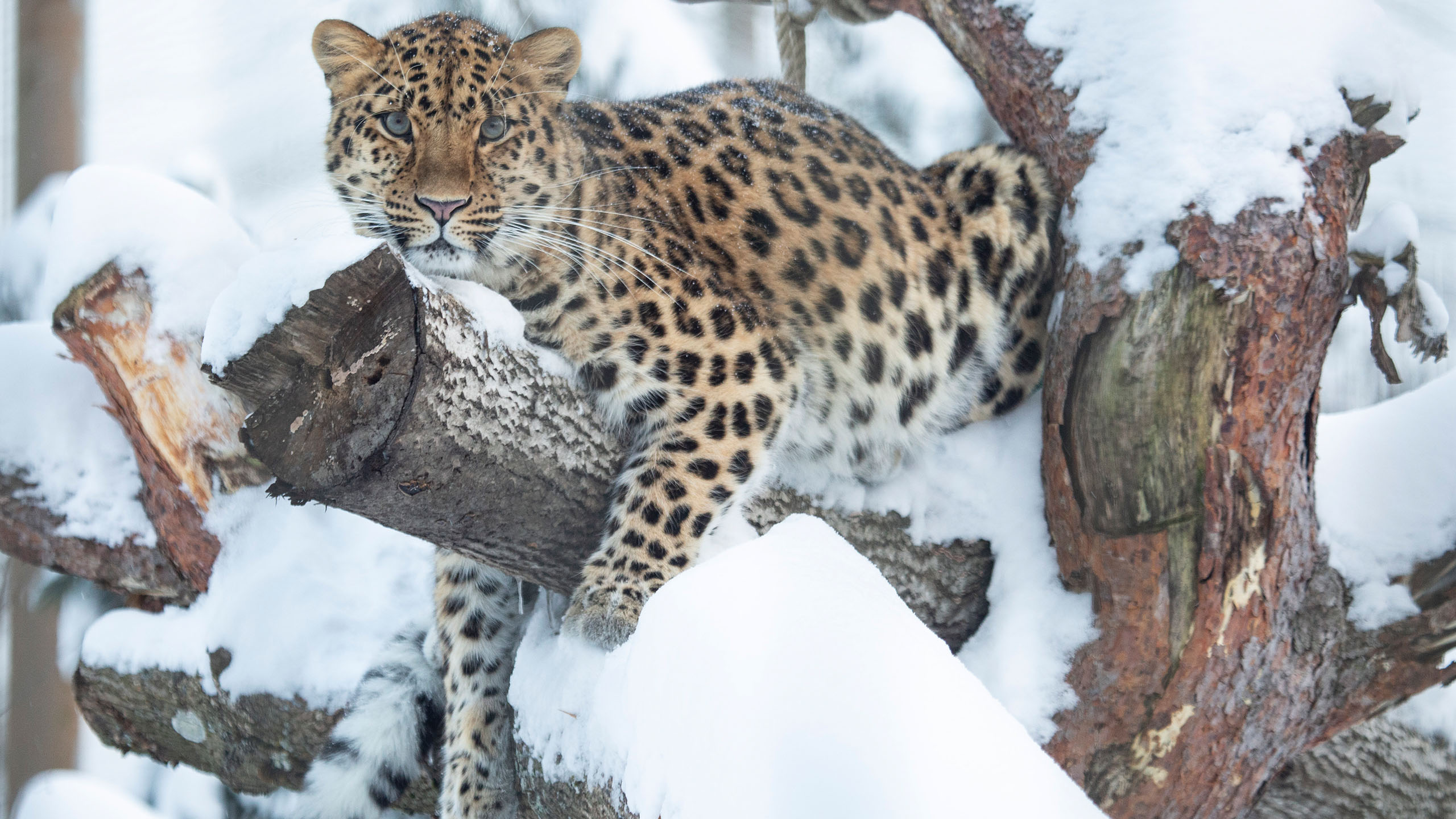
Amur leopard
Panthera pardus orientalis
The Amur leopard is the northernmost of the leopard subspecies. Its home region in the Far East has cold winters. It is also one of the world’s most endangered feline predators. The shrinkage of its habitat and poaching have caused it great distress.
The Amur leopard is a nimble, nocturnal predator. Its spotted coat is good camouflage. The leopard covers a large area in search of food. The males’ territories can be five times as large as the females. A skilled climber, the leopard can drag its prey into a tree to hide it.
Conservation
The Amur leopards are doing better in nature than they have done in decades. In the 1970s, the natural population was only 25-40 individuals, and extinction has seemed inevitable. However, the Amur leopard has been relentlessly protected, and in the 2010s the number of leopards in nature began to rise. Now there are over 100 leopards living in the border area between eastern Russia and China.
This species and the individuals living in Korkeasaari Zoo are part of an ex-situ conservation programme by the European Association of Zoos and Aquaria EAZA, known as the EEP. The aim of the EEP is to maintain a healthy zoo population of the species, and to make reintroductions to the wild possible in the future if needed.
Amur leopard is part of the CITES convention, which regulates the international trade of endangered or threatened animals and plants.
Korkeasaari Zoo has an ongoing project to support the conservation of Amur leopards.
Cat Valley
